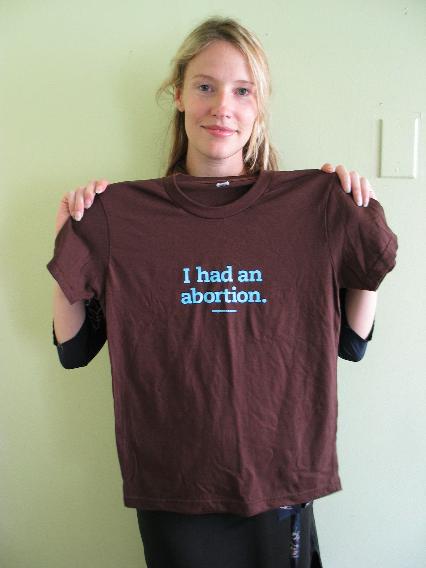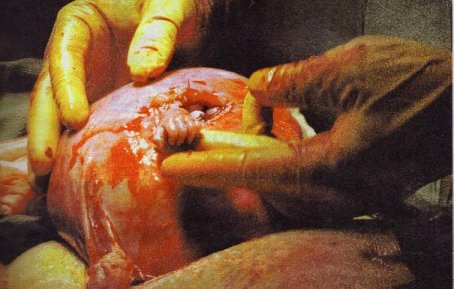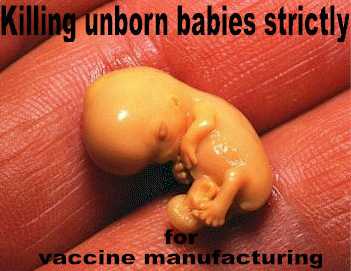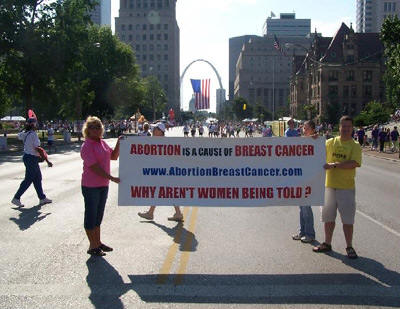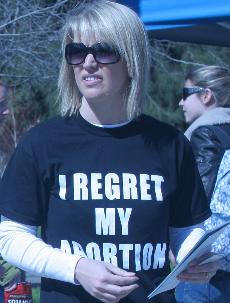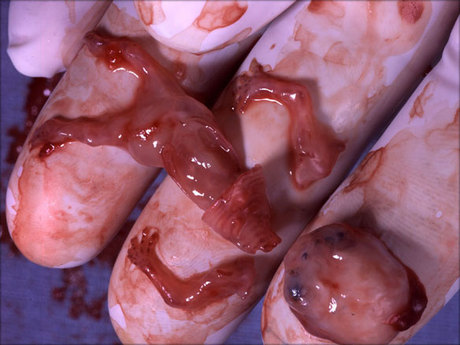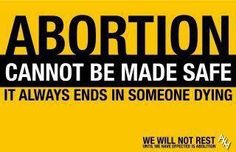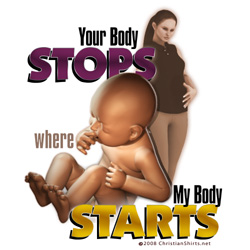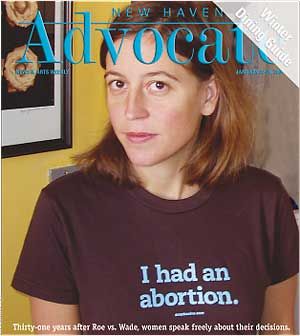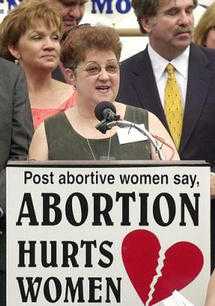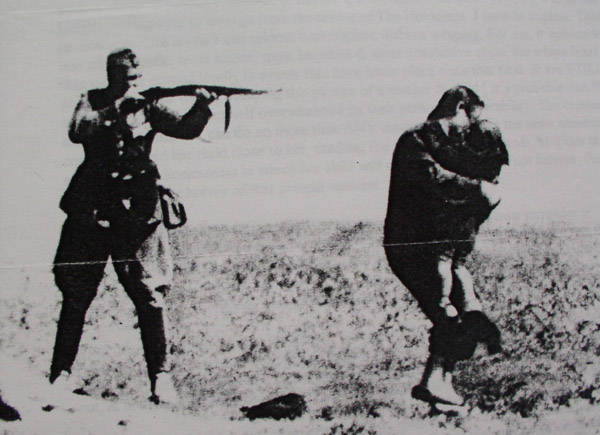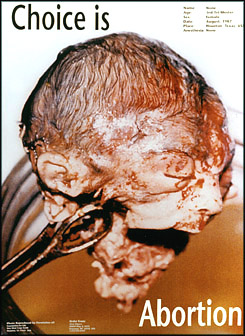Fifty Million
Lost Lives Since 1973
By Randall K. O’Bannon, Ph.D.
Page
18, January 2008,
Volume 35, Issue 1
By the time you read this sentence, America will have passed a tragic,
momentous, and most sobering milestone. Within a day or two of January
22, 2008, the 35th anniversary of Roe v. Wade, baby number
50,000,000 will have been sacrificed on the altar of Roe v. Wade.
The magnitude of the killing is staggering. Fifty million represents a
population greater than any state, greater than California (36 million),
greater than the next two largest states—Texas and New York—combined (23
million and 19 million, respectively). In fact, if you combined the
entire populations of all of the 25 states with the fewest people, it
still would not equal 50 million.
Of course, the issue isn’t numbers. Each abortion represents at least
one lost life and what may be a deeply wounded woman’s soul. Families,
too, suffer, and society itself pays a dear price, with lost innovation,
productivity, and creativity.
How many great books, symphonies, films have been lost? How many
profitable businesses never came to be? What if we aborted the child who
would have found the cure for cancer? How much love and laughter has the
world been deprived of?
The annual toll has slowed down, thanks to the hard work of pro-lifers.
The cumulative number was increasing by 1.6 million a year as recently
as 1990. Today, the annual number is less than 1.3 million, still a
ghastly figure, but a definite improvement. Pro-lifers have changed
minds and changed hearts by legislation, education, and outreach.
According to the U.S. Centers for Disease Control (CDC), the abortion
rate (the number of abortions per thousand women of childbearing age)
for 2004, the latest date for which we have national statistics, was 16.
That rate reached 25 in 1980 and stayed in the 20s up through 1997.
The last time the abortion rate was lower than it is today was in 1973,
the first year of Roe, when it was 14. (See sidebar for more
details on how numbers are obtained and calculated.)
Abortion rates are affected by pregnancy rates and population shifts
both within and without the age bracket. However, abortion ratios reveal
the increasing prevalence of life-affirming choices among America’s
pregnant women. (The CDC reaches its abortion ratio figure by comparing
the number of abortions versus the number of live births.)
In 1984, the abortion ratio was 364, meaning 364 women chose abortion
for every one thousand women who had a live birth. The ratio hit the
300s in 1976 and stayed above 300 for over 20 years. Today, the CDC
reports a figure of 238 abortions for every 1,000 live births, a
decrease of more than a third, a major shift downward.
CDC statistics show us that abortion has changed in the 35 years it has
taken us to go from the first post-Roe abortion in 1973 to the 50
millionth. In 1973, the CDC says that 36.1% of all abortions were
performed at eight weeks of gestation or less. By 2004, that number was
61.4%.
Abortions were nearly evenly split among age groups in 1973. Teens,
women 20–24, and women 25 and older each counted for about a third of
the total (32.7%, 32.0%, and 35.3%, respectively). By 2004, those
percentages skewed heavily toward the older end of that spectrum.
Women 25 and older accounted for nearly half of all abortions (49.8%),
with teens being responsible for just 17.4%. (Women 20–24 accounted for
32.8%.) Parental involvement laws certainly contributed to this, as do
attitudinal shifts in the younger generation, who have experienced
Roe’s devastation firsthand.
Other changes are identifiable, but less dramatic. Whites accounted for
72.5% of abortions in 1973, blacks for 27%. The percentage of abortions
performed on black women rose to 38.2% in 2004, though overall,
abortions to African-Americans have dropped along with declining
national totals in recent years. Whites accounted for 60.6% of the total
in 2004. Other races were responsible for the remaining 4.7%
Hispanics were not counted by the CDC as a separate ethnic group until
1990, but their percentage has risen steadily. Responsible for 11.4% of
abortions in 1990, Hispanics in 2004 accounted for 21.5% of the
abortions. (Hispanics appear to have been counted as “white” in the
racial breakdowns above. Ethnicity is simply broken down by “Hispanic”
and “Non-Hispanic.”)
The vast majority of aborting women have always been unmarried. The
proportion increased only slightly over the past three-plus decades of
legal abortion. Unmarried women accounted for 72.6% of abortions in 1973
and 82.8% in 2004.
One very significant change is the number of women having abortions
who’d previously given birth. Figures from the earliest years are fuzzy,
but in 1979–81, over 58% of women having abortions reported no previous
live births. By 2004, that number had flipped, with at least 59.1%
already having given birth to at least one other child.
CDC figures on the type of abortion procedure used are not entirely
helpful because of the broadness and vagueness of their categories.
“Curettage” was the method used for 88.4% of abortions in 1973. 74.9% of
that was “suction curettage” and 13.5% for what the CDC calls “sharp
curettage.”
“Intrauterine instillation” methods, using chemicals such as hypertonic
saline, accounted for 10.3% of abortions in 1973, while
“hysterotomy/hysterectomy” was employed in 0.7%. (A hysterotomy is
similar to a Cesarean section but with the objective of killing the
child.) “Other” methods were responsible for the remaining 0.4%.
By 2004, hysterotomy/hysterectomy as an abortion procedure had virtually
disappeared (it is now counted in the “other” category if it ever
occurs). “Intrauterine instillation” (now likely to use other chemicals
such as hyperosmolar urea) accounts for 0.5%. After hitting a high of
98.9% in 1995, curettage now accounts for 88.6% of abortions (with
“suction curettage” at 87.4%, “sharp curettage” at 1.2%). The difference
has largely been taken up by “other” procedures, which now include
“medical” [chemical] abortions such as those done with RU486. They
account for 10.8%.
At least 43.9% of abortions in 2004 were repeat abortions. The status of
2.4% of women was unknown, meaning the real figure could be as high as
46.3%.
The CDC reported that 10 women died from legal abortions in 2003. The
CDC notes that from its records, at least 362 women have died from legal
abortions since 1973.
Who’s Counting
and How?
There are two basic sources of abortion statistics in the U.S.—the Alan
Guttmacher Institute (AGI), which is a special research affiliate of
Planned Parenthood, and the Centers for Disease Control (CDC), which is
an agency of the U.S. government. Both have their flaws and advantages.
The CDC relies on reports it receives from state health agencies. These
are widely recognized to be undercounts, and many states no longer
report at all. California, the nation’s most populous state, has been
missing from CDC totals since 1998, along with a few others. Thus the
CDC figures cannot realistically be used to calculate national totals.
AGI surveys abortion clinics directly, making its totals much more
reliable. But AGI does not conduct its surveys every year.
Even with its flaws, CDC statistics, because of their regularity, give a
better sense of the demographic shifts from year to year. AGI surveys
give a better estimate of the national total and the cumulative numbers
over time.
National Right to Life uses the AGI estimates to calculate the number of
abortions that have occurred in America since 1973, the year Roe
was decided. AGI has published estimates of annual abortions for every
year from 1973 to 2003. The latest figure is1,287,000. However, even
AGI’s numbers are low.
NRLC uses the figure of 1,287,000 for every year from 2003 to 2007 and
then adds an additional 3% that AGI itself says its surveys may
undercount. This yields a total of 49,915,602 abortions up through the
end of 2007.
At the current rate of 3,526 abortions per day, the 50 millionth
abortion would have occurred just before midnight on January 23.
SOURCE:
Fifty
Million Lost Lives Since 1973
END
 It is so tragic. In January of 2008, the United States secretly passed it's
50,000,000th abortion!!! Not a word was mentioned by the manure-spreading
newsmedia. Not one word was mentioned on America's radios. America's pulpits
were eerily silent. How could this be? What has happened to our nation? Why
are the churches silent? Why don't people care anymore? Oh, the loss of
humanity!
It is so tragic. In January of 2008, the United States secretly passed it's
50,000,000th abortion!!! Not a word was mentioned by the manure-spreading
newsmedia. Not one word was mentioned on America's radios. America's pulpits
were eerily silent. How could this be? What has happened to our nation? Why
are the churches silent? Why don't people care anymore? Oh, the loss of
humanity!
